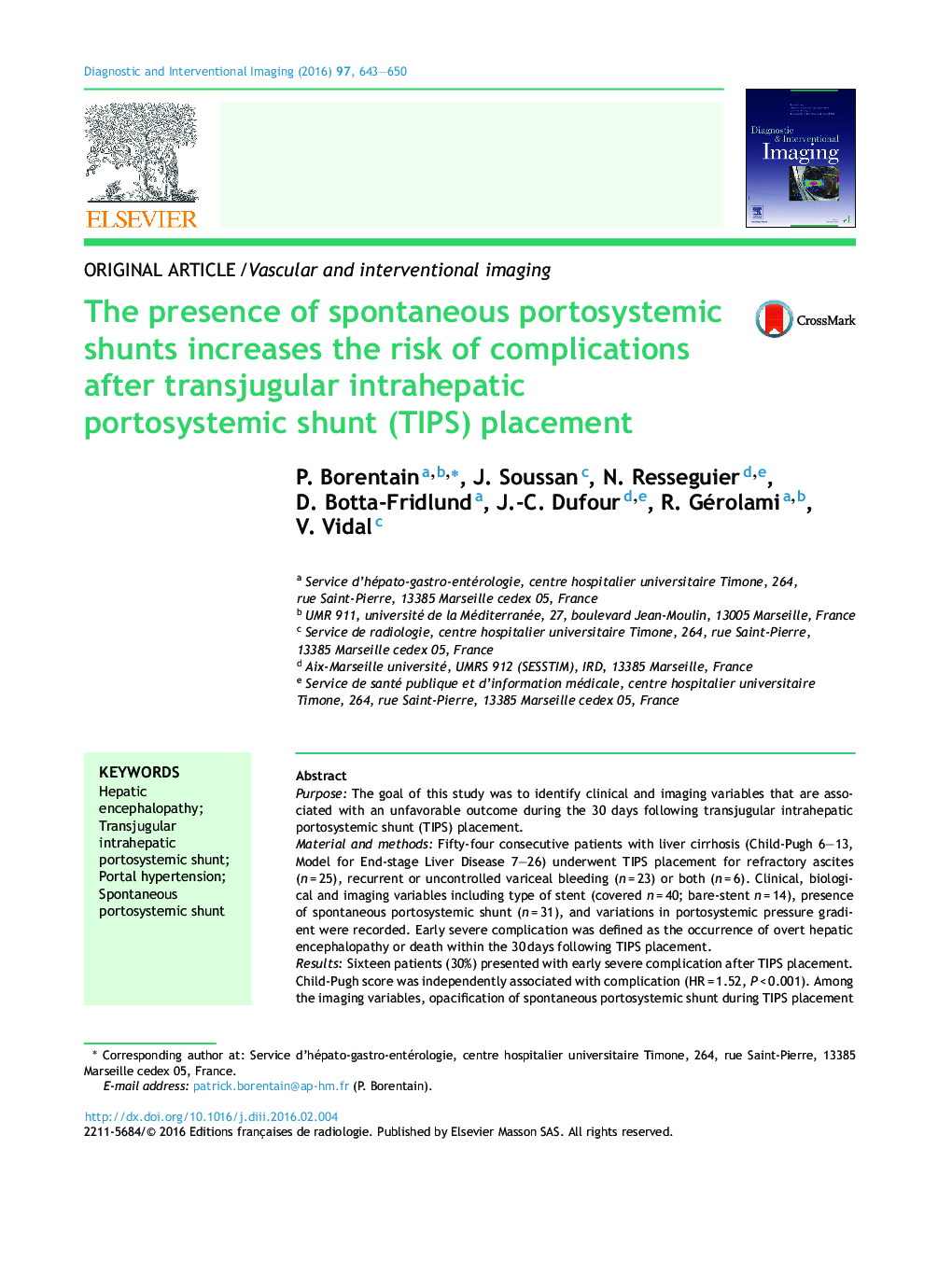| Article ID | Journal | Published Year | Pages | File Type |
|---|---|---|---|---|
| 2732640 | Diagnostic and Interventional Imaging | 2016 | 8 Pages |
PurposeThe goal of this study was to identify clinical and imaging variables that are associated with an unfavorable outcome during the 30 days following transjugular intrahepatic portosystemic shunt (TIPS) placement.Material and methodsFifty-four consecutive patients with liver cirrhosis (Child-Pugh 6–13, Model for End-stage Liver Disease 7–26) underwent TIPS placement for refractory ascites (n = 25), recurrent or uncontrolled variceal bleeding (n = 23) or both (n = 6). Clinical, biological and imaging variables including type of stent (covered n = 40; bare-stent n = 14), presence of spontaneous portosystemic shunt (n = 31), and variations in portosystemic pressure gradient were recorded. Early severe complication was defined as the occurrence of overt hepatic encephalopathy or death within the 30 days following TIPS placement.ResultsSixteen patients (30%) presented with early severe complication after TIPS placement. Child-Pugh score was independently associated with complication (HR = 1.52, P < 0.001). Among the imaging variables, opacification of spontaneous portosystemic shunt during TIPS placement but before its creation was associated with an increased risk of early complication (P = 0.04). The other imaging variables were not associated with occurrence of complication.ConclusionIdentification of spontaneous portosystemic shunt during TIPS placement reflects the presence of varices and is associated with an increased risk of early severe complication.
